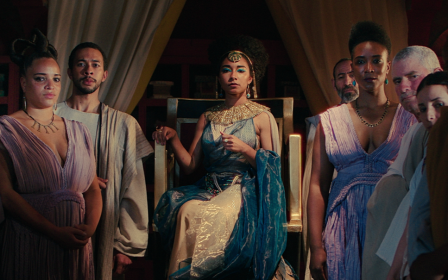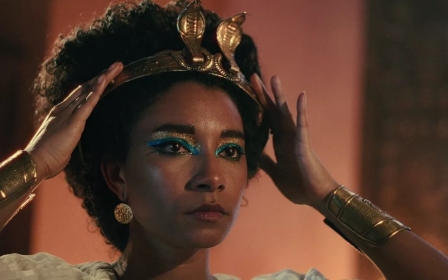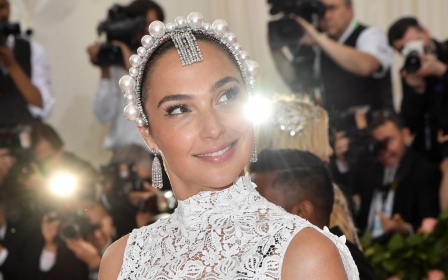
In pictures: Depictions of Cleopatra through the ages
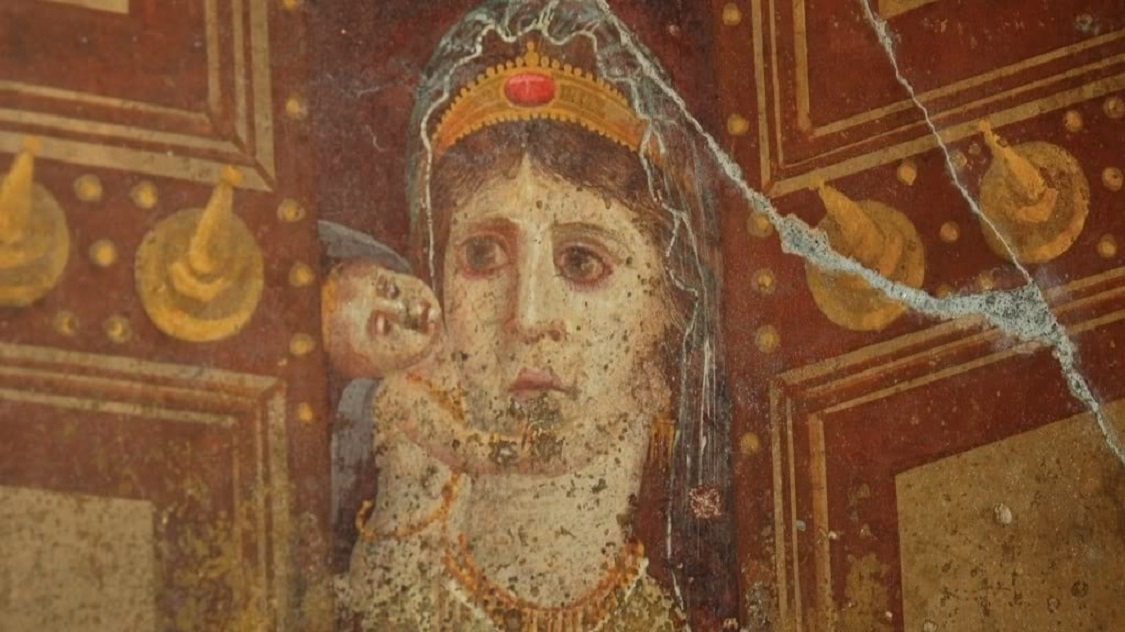
A wall painting from around 46 BCE presumed to be of the Egyptian queen is one of few depictions from her lifetime that still survives. Venus and Cupid, which is in the House of Marcus Fabius Rufus in Pompeii, Italy, is believed to be a mural of an infamous statue of Cleopatra unveiled by Julius Caesar the same year in Rome. The lost statue belonged in the now ruined Temple of Venus Genetrix. Caesar and Cleopatra, both already married at the time, entered into a love affair for several years until his death. The statue was seen as both a romantic gesture by Caesar but also a political one, showcasing the alliance between Rome and Egypt at the height of the couple's power. The mural of the statue in Pompeii depicts Cleopatra as Venus, and her son Caesarion - the only known biological son of Caesar - as a cupid. After the deaths of Cleopatra and Caesarion in 30 BCE at the hands of Octavian, images and statues of Caesar's unacknowledged son were proscribed. The owner of the house in Pompeii hid his mural depiction behind a brick wall, and it has since survived. Wall paintings, coinage from the 30s BCE and several early busts and statues of the queen were key in helping historians ascertain what Cleopatra may have looked like. The top image is a first century CE Roman depiction of Cleopatra found in Herculaneum, south of Naples. (Wikmedia)
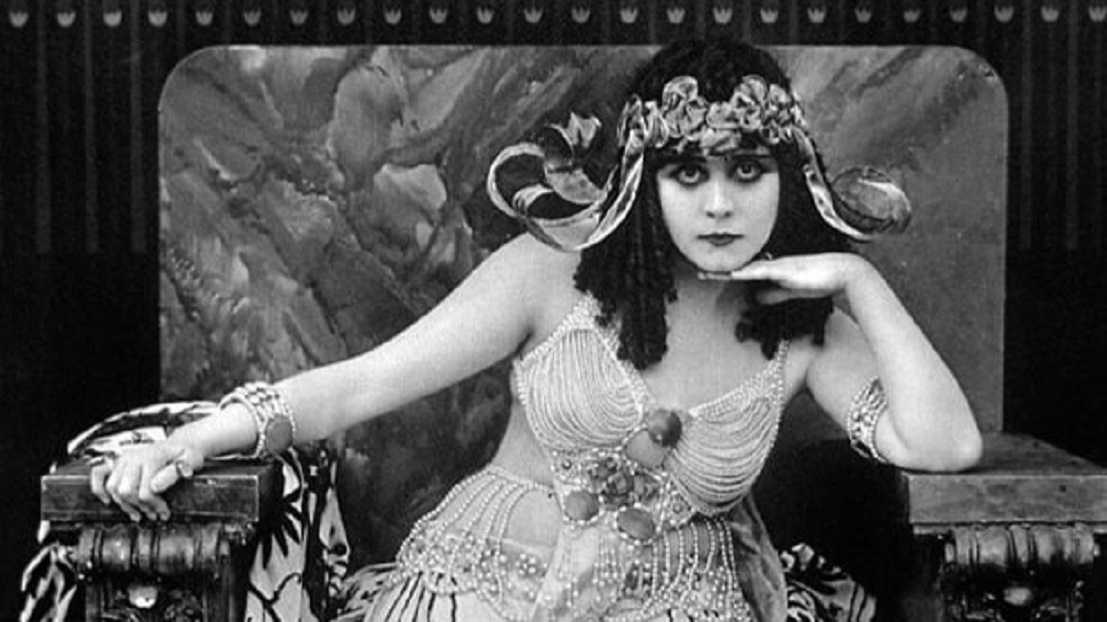
If there’s one actress who portrayed Cleopatra and became defined by the characterisation, it’s Theda Bara. Her 1917 eponymous movie about the Egyptian ruler is thought to be one of the most iconic silent films ever made. The film is laced in stereotypical tropes and images, with Bara in several scenes wearing little above her hips other than snakes coiled around her breasts. Bara, who was born Theodosia Burr Goodman to Polish and Swiss Jewish parents in Ohio, was falsely promoted by filmmakers as the child of either an Arab princess or sheikh, who was “born in the shadow of the Sphinx”. Fox Studios, which produced the 1917 film, noted that her stage name was an anagram for “Arab death”, and later used that claim to play up her imagined exotic credentials. The production company remarkably also claimed that Bara’s portrayal was forecast 2,500 years ago in ancient Egypt, evidenced by a tomb which apparently prophesied the coming of a good-hearted temptress called “Theta”. In this case, “Theta” was interchangeable with “Theda”. Like her depiction of Cleopatra, Bara would go on to be cast in several femme fatale roles in which she plays a seductive woman who brings disaster to the men she attracts. Unfortunately for anyone who wants to watch her portrayal of the Egyptian queen, copies of it were burned in various fires. Only about 20 seconds of footage and still images remain from the long-lost classic. (Public domain)
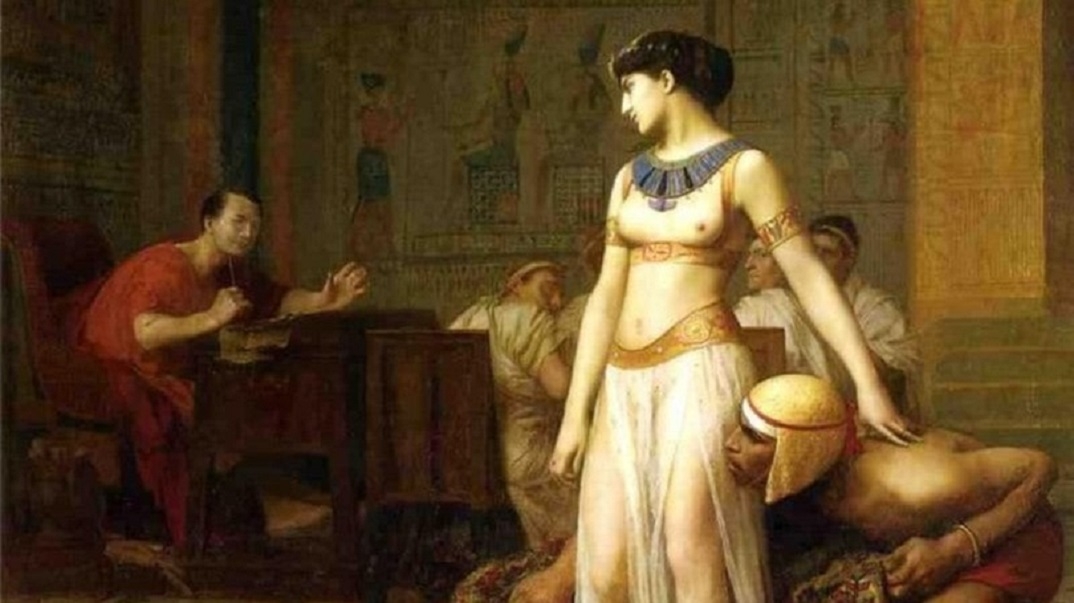
Many paintings and retellings of Cleopatra feature a scene in which she smuggles her way into the chambers of Julius Caesar by hiding herself in a rolled-up carpet. The idea of the carpet is likely to have originated from a mistranslation of Greek historian Plutarch's writings on Caesar, who said it was likely to have been a large sack used for tying up bed clothes. Plutarch's text 200 years after Cleopatra’s death is one the earliest and most frequently cited accounts on the queen's life. The carpet motif has become a favourite of artists and screenwriters. In Jean-Leon Gerome’s 1866 oil painting of the scene, a bare-chested Cleopatra distracts Caesar from his work. It feeds into the common theme of depicting the Egyptian ruler as a temptress using her beauty and mystique to further her political objectives. The work was commissioned during the period of “Egyptomania” - a renewed fascination with ancient Egyptian culture after Napoleon's brief invasion of Egypt at the turn of the 19th century. Gerome, like many French artists at the time, travelled to the Middle East and North Africa and worked on several historical and Orientalist paintings. (Wikimedia)
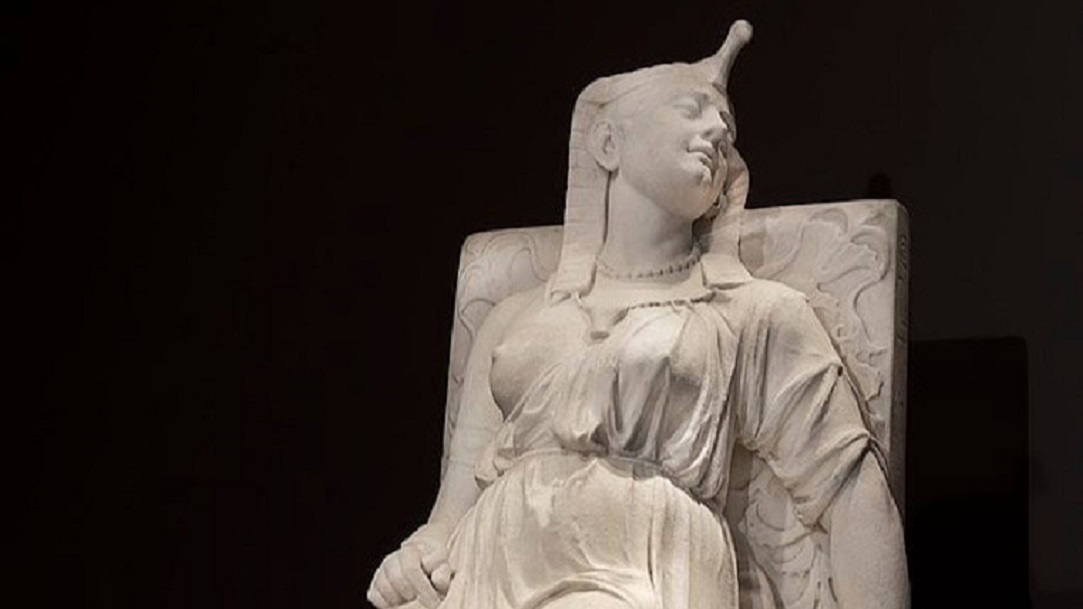
Cleopatra’s death, as she and her husband - and second Roman lover - Mark Antony were being pursued by rival Octavian, is another frequent subject for artists and writers. While Antony is thought to have stabbed himself, popular accounts depict Cleopatra killing herself by letting an asp bite her. For Plutarch, it was more likely that she poisoned herself. American sculptor Edmonia Lewis’s The Death of Cleopatra, carved in 1876, has been described as a realistic and humane depiction of the queen’s demise. Unlike the more imaginative and dramatic interpretations, here Cleopatra has a calm stillness and a self-determination as the effect of the venomous snake takes hold. Lewis, who was of mixed Black and Native American heritage, looked at ancient coinage to help her figure out the queen’s appearance. Her sculpture was presumed lost for almost a century before reappearing in the 1980s, and is now housed in the Smithsonian museum in Washington. Cleopatra’s death would go on to be a seismic event in world history, marking the end of the 275-year rule of the Ptolemaic dynasty and the end of “ancient Egypt” as we know it. It also marked the beginning of Rome’s rule over Egypt under the new Roman empire which succeeded the Roman republic.
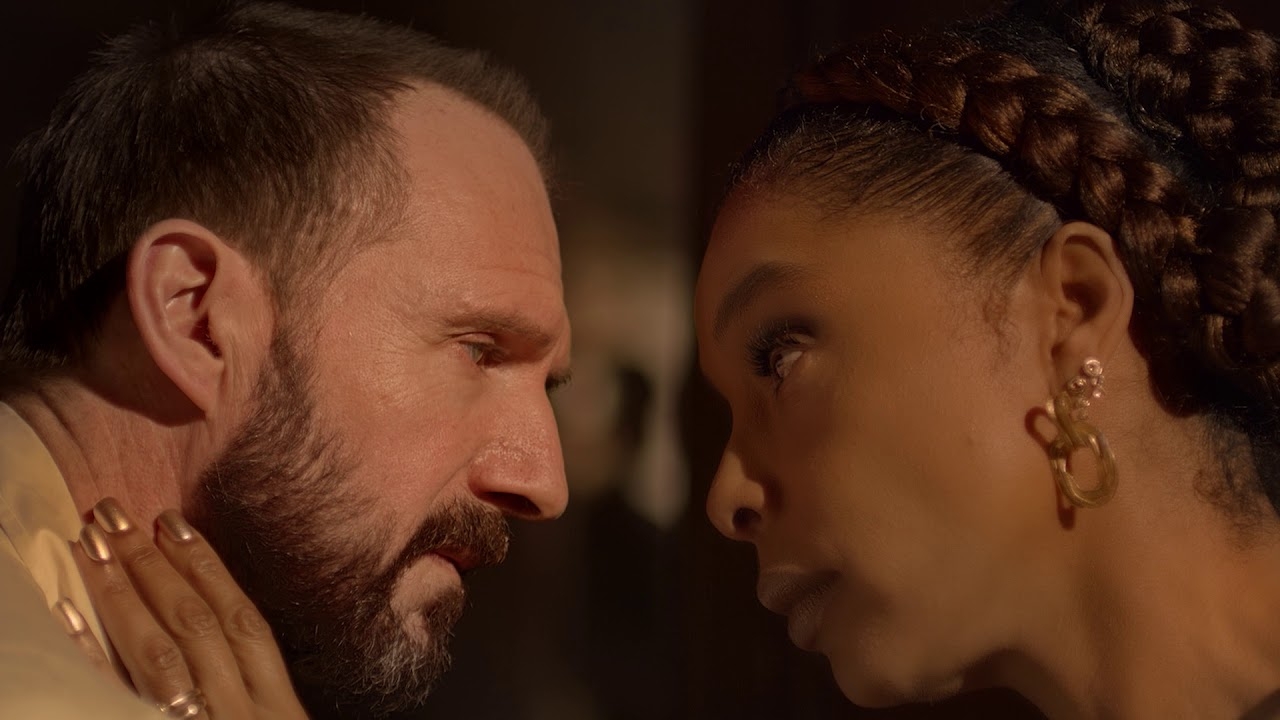
William Shakespeare’s Antony and Cleopatra, first performed in 1607 and based on Plutarch, has influenced popular understanding of the queen for over four centuries. Plutarch-inspired works have long been criticised for depicting Cleopatra as a manipulative puppet master using her sexuality to further her goals. Critics attribute Plutarch’s sources to propagandist Romans keen to malign the queen’s perceived corrupting impact on her Roman generals. However, many believe Shakespeare dealt with Cleopatra with a complexity and depth not seen in other female characters in his plays. She was passionate, romantic and dramatic, but also strong and charismatic. The play presents Rome as structured, stoic and masculine, while Egypt is theatrical and feminine - possibly reflecting Elizabethan attitudes towards East and West at the time. It also presented the Egyptian queen and Antony as star-crossed lovers ripped apart by their tragic destiny - not dissimilar from Romeo and Juliet. Like that romantic tragedy, Antony and Cleopatra’s fate is also sealed by a double suicide. But we can only speculate the extent to which they were actually hopeless romantics. The play has been fronted by several famous duos, including Laurence Olivier and Vivien Leigh, Anthony Hopkins and Judi Dench, and Ralph Fiennes and Sophie Okonedo, pictured above. (National Theatre).
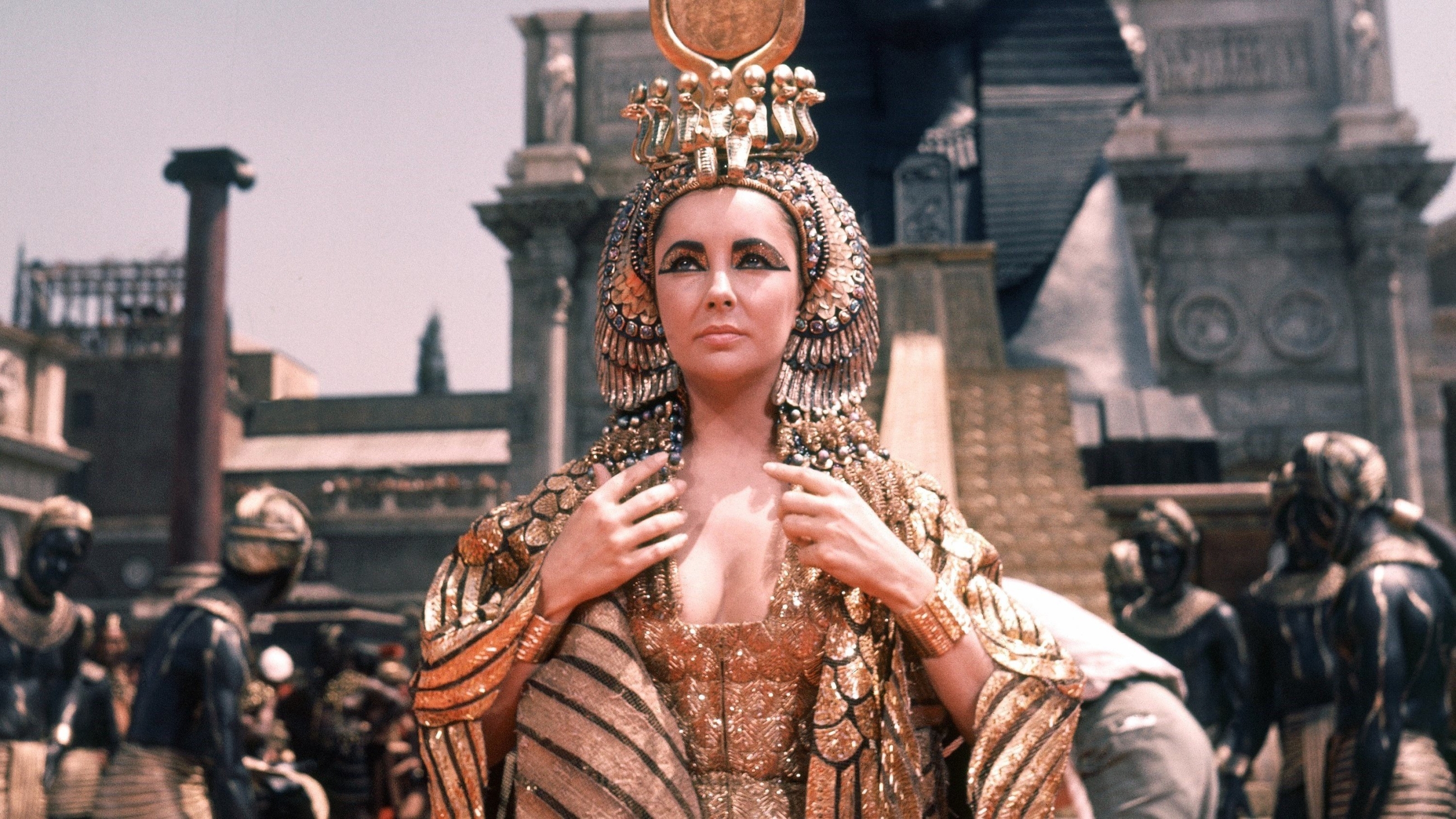
Nothing captured opulence, grandiosity and intrigue in Cleopatra’s private and public life quite like the 1963 film Cleopatra. At the time, the Hollywood blockbuster starring Elizabeth Taylor became the most expensive film ever made, costing around $31mn. With its 65 costume changes and a huge production, the movie was extravagant and dramatic - on and off stage - much like its subject matter. During filming, Taylor entered into an affair with Richard Burton, who played Mark Antony, adding to the tabloid intrigue and scandal. They later married for 10 years. Taylor’s Cleopatra, with her smoky, heavily lined black kohl eyeliner and decadent jewels designed by Bulgari, had a lasting influence on fashion. The eyeliner, headwear, capes and arm cuffs later became synonymous with its leading actress. The film won four Academy Awards, in production design, cinematography, visual effects and costume design, but it was not without controversy, especially in the Arab world. Taylor, who had converted to Judaism a few years earlier, was an outspoken and ardent public backer of the state of Israel. That led to her films being banned across several countries in the Middle East, which saw Israel as an enemy state. While most of the filming of Cleopatra took place in Rome, there were plans to shoot scenes in Egypt. Those plans were scuppered by Taylor’s ban from entering the country. But Egyptian officials reportedly liked the film so much, and its 122 mentions of Egypt, that the travel ban was later lifted. (20th Century Fox)

The August 2010 TV series Cleopatra was significant in that it was the first Arab-produced serial on the titular queen. The 30-episode show aired throughout the holy month of Ramadan, as is customary for blockbuster productions in the region. The joint Egyptian-Syrian series starred Syrian actress Sulaf Fawakherji as Cleopatra. As with this year's depiction by Netflix, the Egyptian government was not impressed with the portrayal. “The series does not depict historical reality, and the events described have nothing to do with those that marked the time of Cleopatra in Egypt,” said Zahi Hawass, then minister for antiquities. Hawass criticised the costumes and set designs, suggesting they didn’t “correspond” with Egypt “after it merged with the Greco-Ptolemaic civilisation”. The Egyptian producer of the series, Tarek Siam, said the show was never intended to be a historically accurate depiction of ancient Egypt, but rather an exploration of Cleopatra’s personality. It wasn’t the first Arab motion picture focused on the queen; she was depicted in Egyptian cinema as far back as 1943 in a little-known film starring Amina Rizk. (Screengrab/YouTube)

British artist Chris Ofili’s 1992 painting of Cleopatra (Royal College of Art) presents her as a Black queen. For centuries, the Ptolemaic ruler, who had Greek Macedonian ancestry, was portrayed as light-skinned, often donning the clothes of the European fashion at the time of artists' depictions. In Giovanni Battista Tiepolo’s 1745 painting The Meeting of Antony and Cleopatra, the Egyptian queen could be mistaken for an 18th century Italian princess. In fact, many European noblewomen sat to have their portraits painted posing as Cleopatra, such as Joshua Reynolds’ Kitty Fisher as Cleopatra Dissolving the Pearl in 1759. Ofili offered a powerful reimagining of the queen, breaking away from centuries of depictions conforming to European standards of beauty. The Cleopatra race debate that he taps into is a longstanding one. Jamaican-American writer JA Rogers asserted in 1946 that he believed Cleopatra was Black, due to an unidentified grandmother described as a slave. He claimed that the idea of a Black Cleopatra dates as far back as the 16th century, citing references to her skin colour alluded to in Shakespeare’s play. Mary Lefkowitz, a scholar and critic of Afrocentric readings of Egyptian history, rebutted that Rogers misunderstood the nature of slavery in Greek and Roman societies. But depictions of Cleopatra as Black - for example casting Black women to play the queen in Shakespeare’s play - may serve more as statements about 21st century diversity in cinema and theatre, and the reimagining of European art and literature, than in historical fact.
Middle East Eye delivers independent and unrivalled coverage and analysis of the Middle East, North Africa and beyond. To learn more about republishing this content and the associated fees, please fill out this form. More about MEE can be found here.


